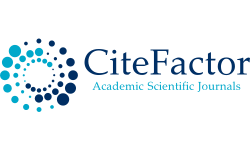The Innovation Strategy and Effects in Organizational Learning: The Manufacturing Sector in Colombia
DOI:
https://doi.org/10.22451/3002.nbr2018.vol4.2.10030Palabras clave:
Innovation, manufacturing industry, strategy, organizational learning, processes.Resumen
Purpose
To understand how innovation strategy measure by organizational methods and technology equipment, affects to organizational learning measure by improvement in production, distribution and logistics systems.
Methodology
This is an empirical analysis of the innovation strategy and organizational learning, concentrating on 8835 manufacturing companies in 33 subsectors with innovative processes, investment in research and development, better organizational methods and technology equipment, using databases from the National Department of Statistics-DANE. Multiple Regression. Software SPSS.
Findings:
An industry with an innovation strategy tends to get better and improved processes, and this learning allows firms to achieve value creation for the customer, turning into better types of products offered with unique characteristics to compete in the challenging markets. Where the greatest improvement in methods of production, distribution, delivery and logistics will be the result of a very well manage innovation, to more innovation strategy more organizational learning.
Research Limitations:
The type of innovations in process were heterogeneous and the data do not allow to clarify specific improvement and innovation type.
Practical Implications:
This empirical study establishes, two special practical implications, first identify special characteristics in innovation in one of the most representative sectors of the Colombian economy that even though address incremental innovations, especially through processes, and the second element is to recognize that the innovative strategy becomes a differentiating factor for companies in this sector, beyond technological barriers and culture of innovation that may appear.
Originality:
The research was made for the most innovative sectors in the manufacturing Colombian industry, this particular context was not studied enough before in the particular constructs of innovation strategy and organizational learning.
Key Words: Innovation, manufacturing industry, strategy, organizational learning, processes.
JEL: M1, M10
Descargas
Citas
References
Adner, R. (2006). Match your innovation strategy to your innovation ecosystem. Harvard business review, 84(4), pp. 98.
Adner, R., & Kapoor, R. (2010). Value creation in innovation ecosystems: How the structure of technological interdependence affects firm performance in new technology generations. Strategic management journal, 31(3), pp. 306-333.
Berkowitz, M. (1987). Product shape as a design innovation strategy. Journal of Product Innovation Management, 4(4), pp. 274-283.
Casadesus-Masanell, R., & Ricart, J. E. (2010). From strategy to business models and onto tactics. Long range planning, 43(2), pp. 195-215.
Demil, B., & Lecocq, X. (2010). Business model evolution: in search of dynamic consistency. Long range planning, 43(2), pp. 227-246.
Ferreras-Méndez, J. L., Fernández-Mesa, A., & Alegre, J. (2016). The relationship between knowledge search strategies and absorptive capacity: A deeper look. Technovation, 54, pp. 48-61.
García-Granero, A., Vega-Jurado, J., & Alegre, J. (2014). Shaping the firm’s external search strategy. Innovation, 16(3), pp. 417-429.
Ghemawat, P. (2003). Semiglobalization and international business strategy. Journal of International Business Studies, 34(2), pp. 138-152.
Hitt, M. A., Hoskisson, R. E., & Kim, H. (1997). International diversification: Effects on innovation and firm performance in product-diversified firms. Academy of Management journal, 40(4), pp. 767-798.
Jiménez-Jiménez, D., & Sanz-Valle, R. (2011). Innovation, organizational learning, and performance. Journal of business research, 64(4), pp. 408-417.
Kulchina, E. (2017). Do foreign entrepreneurs benefit their firms as managers?. Strategic Management Journal.
Kumar, V., Aksoy, L., Donkers, B., Venkatesan, R., Wiesel, T., & Tillmanns, S. (2010). Undervalued or overvalued customers: capturing total customer engagement value. Journal of Service Research, 13(3), pp. 297-310.
McDonough, E. F., Zack, M. H., Lin, H. E., & Berdrow, I. (2008). Integrating innovation style and knowledge into strategy. MIT Sloan Management Review, 50(1), pp. 53.
Meyer, K. E., Estrin, S., Bhaumik, S. K., & Peng, M. W. (2009). Institutions, resources, and entry strategies in emerging economies. Strategic management journal, 30(1), pp. 61-80.
Peng, M. W., Wang, D. Y., & Jiang, Y. (2008). An institution-based view of international business strategy: A focus on emerging economies. Journal of international business studies, 39(5), pp. 920-936.
Pinto Jiménez, J. D. J., Fernández Ortea, R., Martínez Cerna, L., &
KAUFFMANN PAPALÉO, U. I. L. H. E. R. M. E. (2006). Análisis del énfasis en la innovación en la implantación del" Middle-Up-Down Management Model": Un estudio evolutivo en las empresas manufactureras del País Vasco. Aspectos metodológicos y empíricos. Estudios Gerenciales, 22(101), pp. 37-59.
Pla-Barber, J., & Alegre, J. (2007). Analysing the link between export intensity, innovation and firm size in a science-based industry. International Business Review, 16(3), pp. 275-293.
Portafolio. “Crecimiento del sector manufacturero para este año comienza a ser visto con reservas” Disponible en: http://www.portafolio.co/economia/crece-produccion-industrial-en-colombia-2017-503380 [Consultado 28-02-2017].
Porter, M. E. (1979). The structure within industries and companies' performance. The review of economics and statistics, pp. 214-227.
Porter, M. E. (1991). Towards a dynamic theory of strategy. Strategic management journal, 12(S2), pp. 95-117.
Porter, M. E. (2015). Ventaja competitiva: creación y sostenimiento de un desempeño superior. Grupo Editorial Patria.
Porter, M. E., & Heppelmann, J. E. (2016). How Smart, Connected Products Are Transforming Companies. Harvard Business Review, 94(1-2), pp. 24-24.
Saleh, S. D., & Wang, C. K. (1993). The management of innovation: strategy, structure, and organizational climate. IEEE transactions on engineering management, 40(1), pp. 14-21.
Schaltegger, S., & Wagner, M. (2011). Sustainable entrepreneurship and sustainability innovation: categories and interactions. Business Strategy and the Environment, 20(4), pp. 222-237.
Subgerencia Cultural del Banco de la República. (2015). Productos más representativos de la economía colombiana. Disponible en: http://www.banrepcultural.org/blaavirtual/ayudadetareas/economia/productos_economia_colombiana [Consultado 28-02-2017]
Teece, D. J. (2010). Business models, business strategy and innovation. Long range planning, 43(2), pp. 172-194.
Villar, C., Pla-Barber, J., & Alegre, J. (2012). Unravelling the moderating effects of size and experience on product innovations and exports: a study in a medium knowledge-intensive industry. Technology Analysis & Strategic Management, 24(2), pp. 219-238.
Villar, C., Alegre, J., & Pla-Barber, J. (2014). Exploring the role of knowledge management practices on exports: A dynamic capabilities view. International Business Review, 23(1), pp. 38-44.
Von Krogh, G., Nonaka, I., & Aben, M. (2001). Making the most of your company's knowledge: a strategic framework. Long range planning, 34(4), pp. 421-439.
Zott, C., Amit, R., & Massa, L. (2011). The business model: recent developments and future research. Journal of management, 37(4), pp. 1019-1042.
Descargas
Publicado
Cómo citar
Número
Sección
Licencia
Derechos de autor 2018 Iris María Vélez Osorio

Esta obra está bajo una licencia internacional Creative Commons Atribución-NoComercial-CompartirIgual 4.0.












